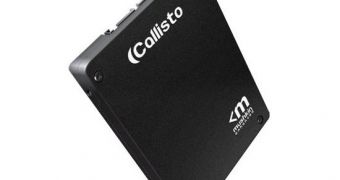While most people may see transitions to new process nodes as only beneficial, Mushkin does not share this opinion, being of the reported opinion that it has no real reason, yet, to advance to the 25nm technology.
Consumers may be aware of the fact that some makers of NAND Flash storage have started to move their product lines from the 3Xnm process to 2Xnm.
Corsair, for instance, began the transition from 34nm to 25nm not long ago, and OCZ was even faster, though it did hit a snag that it subsequently had to fix.
Either way, it seems that Mushkin is not as enticed with the prospect as its competitors, saying that it makes no sense to push things forward before it got the chance to give 25nm NAND the same quality level as 34nm Flash products.
"We here at Mushkin, Inc. have always strived to deliver the best hardware that has gone through the most strenuous quality control process. We feel that consumers will not yet enjoy the benefits of 25nm Flash memory because of the capacity-reduction issues involved,” says the company.
“We will continue to provide SSDs utilizing 34nm Flash memory chips to ensure that our customers get the quality product they’re expecting and what they very well may have ordered before. As soon as we are convinced of the effectiveness of 25nm Flash memory, we will release products that meet our standards which are accurately described as being different than their 34nm counterparts."
Advancing to a smaller node automatically ensures reduced costs for manufacturers and, thus, for consumers as well.
On the other hand, more gigabytes are needed for over-provisioning, since more advanced NAND, unfortunately, has fewer available program erase cycles.
With this to cause SSD maximum capacity to drop, the outfit feels unwilling to adopt the new chips.
“Because of the manner in which 25nm NAND chips interact with controllers, capacity is noticeably reduced. In addition, 25nm chips have far fewer available program erase cycles, thereby reducing endurance of SSDs with 25nm NAND,” explains the announcement.

 14 DAY TRIAL //
14 DAY TRIAL //